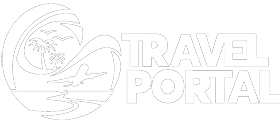Un instant s’il vous plaît, nous recherchons les meilleurs prix
:strip_metadata()/https%3A%2F%2Ftr2storage.blob.core.windows.net%2Fagencylogos%2FZlJwcHvHkZmeQFy4Wc-C4u3uIAQrwOkwFg.png)

:strip_metadata()/https%3A%2F%2Ftr2storage.blob.core.windows.net%2Fagencylogos%2FZlJwcHvHkZmeQFy4Wc-C4u3uIAQrwOkwFg.png)

:strip_metadata()/https%3A%2F%2Ftr2storage.blob.core.windows.net%2Fimagenes%2FfCM7DDSiaaNT-hpePzqbFOTjpeg.jpeg)
:strip_metadata()/https%3A%2F%2Fstatic.travelconline.com%2Fimagenes%2F4mZobtgu3JJi-R45RZoFzEDT8jNa.jpeg)
:strip_metadata()/https%3A%2F%2Ftr2storage.blob.core.windows.net%2Fimagenes%2Fsouthamerica%2Fmexico%2Fvalladolid%2Fpict1.jpg)
:strip_metadata()/https%3A%2F%2Fstatic.travelconline.com%2Fimagenes%2FagMPtAN57XRr-n4SDvBI5VPtiu6c.jpeg)
:strip_metadata()/https%3A%2F%2Ftr2storage.blob.core.windows.net%2Fimagenes%2FChichenItza2-2cdb1e73-884e-40d0-a91b-4da2e4810521.jpg)
:strip_metadata()/https%3A%2F%2Fstatic.travelconline.com%2Fimagenes%2FBi2l2d3nHrd9-uKnf2IB420jpeg.jpeg)
:strip_metadata()/https%3A%2F%2Ftr2storage.blob.core.windows.net%2Fimagenes%2F5s6FBvKklaso-fjYCcNuQE2eGClK.jpeg)
:strip_metadata()/https%3A%2F%2Fstatic.travelconline.com%2Fimagenes%2F6YjOeErk45D8-6JIJFAfVHqDafJo.jpeg)
:strip_metadata()/https%3A%2F%2Ftr2storage.blob.core.windows.net%2Fimagenes%2F6aVoFBNOmYtn-567992960720.jpeg)
:strip_metadata()/https%3A%2F%2Fstatic.travelconline.com%2Fimagenes%2FEr2dpoRe5okl-mgZSgDfXoLjpeg.jpeg)
:strip_metadata()/https%3A%2F%2Ftr2storage.blob.core.windows.net%2Fimagenes%2Fdescarga-90774284-cb9e-4267-9dec-2466fee64a36.jpg)
:strip_metadata()/https%3A%2F%2Ftr2storage.blob.core.windows.net%2Fimagenes%2Fm5AwpLG4DEeT-KxBK8TbdXGjpeg.jpeg)
:strip_metadata()/https%3A%2F%2Ftr2storage.blob.core.windows.net%2Fimagenes%2FZIvnrl0rceyK-YucatanMexico.jpeg)

CANCÚN · EK BALAM · CHICHÉN ITZÁ · VALLADOLID · UXMAL · CELESTUN · RUTA PUUC · MÉRIDA · CANCÚN
Day 1 (MONDAY) CANCUN - EK BALAM - VALLADOLID - CHICHÉN ITZÁ – MÉRIDA
Early departure from Cancun to the archaeological site of Ek Balam (star-jaguar), known as the “City of the Black Jaguar” and possessing imposing constructions sheltered in the dense vegetation; most date from the Late and Terminal Classic periods (550-950 A.D.). Ek Balam was the capital of the Kingdom of Tah, which dominated the entire eastern Yucatan peninsula between 600 and 850 AD. Ek Balam's combination of architectural styles is unique in the Maya World, and its 45 structures are protected by a walled ring. In the so-called North Plaza, the great Acropolis stands out, which contains the imposing tomb of the ruler Ukit Kan Lek Tok' . After an exhaustive walk, we will refresh ourselves in the crystalline waters of a cenote; these natural wonders were considered sacred places of life and death, and were a vital source for the development of the Mayan civilization.
We will continue with a panoramic tour of the colonial city of Valladolid; it was founded on May 28, 1543 on the remains of the ancient Mayan settlement of Zací. It is the second most important city in the state of Yucatan, and has been the protagonist of two important chapters in Mexico's history: the beginning of the Caste War in 1847, and witnessed the first spark of the Mexican Revolution in 1910.
At the end of the tour, we will move to Chichén Itzá, religious capital of the Itzaes, whose greatest apogee occurred during the Early Postclassic period (900-1200 A.D.). In 1988, the site was declared a World Heritage Site by Unesco, and in its constructions we can distinguish two styles of architecture: Puuc (600-800 A.D.) and Maya-Toltec (800-1100 A.D.). The tour begins at the world-famous Castillo, or Temple of Kukulcan. This imposing building, the most emblematic of the site, was recognized as one of the New Seven Wonders of the Modern World on July 7, 2007. At the end of the visit, we will transfer to Merida, capital of the state of Yucatan. Check-in at the hotel in Merida.
Day 2 (TUESDAY) MÉRIDA - UXMAL - CELESTUN – MÉRIDA
Departure to the spectacular archaeological site of Uxmal. This beautiful Mayan city, belonging to the Classic period (250-950 A.D.), was the capital of the ancient Xiu Kingdom, which exercised rigid control over the Mayan communities of the north, until it became the political and economic capital of the Puuc region. Among its constructions, of the architectural style also known as Puuc, stand out the Quadrangle of the Nuns, the Ball Court, the Dovecote, the House of the Old Woman, the House of the Turtles, and the Pyramid of the Soothsayer, the most outstanding, for its singular elliptical structure and its 35 meters of height. The Governor's House is considered one of the most beautiful buildings in all of Mesoamerica; its façade was exquisitely decorated with very detailed mosaic-like sculptures. Recognized by UNESCO as a World Heritage Site since December 7, 1996.
Two hours from Uxmal is the Ría Celestún Biosphere Reserve in which wetlands have developed, extending through Yucatán and Campeche. It is the eco-tourist paradise of the state of Yucatán. Its exceptional landscape is part of the world heritage of the special biosphere reserve of the same name; with an area of 59,139 hectares, and a length of 21 km, officially declared a wildlife refuge since 1979. Due to its unique ecosystem, a combination of fresh water from the Celestún Estuary and salt water from the Gulf of Mexico. Among its natural attractions are, to the east the Baldiosera spring where you can swim and dive; there is also the Cambay spring which is an eye of fresh water, and finally there is Tambor, where the main attraction is the pink or Caribbean flamingo, the only known population in North America and that has the Celestun estuary as a feeding and resting point; the flamingos of Celestun are the pinkest in the world, due to the concentration of carotene in the water.return to Merida and overnight.
Day 3 (WEDNESDAY) MÉRIDA AND RUTA PUUC
Departure to the Puuc Route. We will visit three sites in the area known as the Puuc Route. This group of archaeological sites, whose name means “mounds or mountain range” reached their apogee during the Terminal Classic period (830-950 A.D.). Their constructions share the same architectural style, characterized by pyramids topped by crests; small, false columns embedded in the facades; and stylized Maya huts. In their designs, rhombuses and fretwork are widely used, as well as serpents and masks of Chaac, the god of rain, for which numerous pieces of carved stone were used, assembled in the form of mosaics, which produced a superb decorative effect.
Our first stop: the magnificent archaeological site of Kabah, located just 23 kilometers southeast of Uxmal. Its name means “the powerful hand”, and it belongs to the Late Classic period (550-830 A.D.). The site is considered the second largest religious center of the Puuc style for its sacred white roads (sacbeob) and magnificent constructions. Among the most outstanding are the Palace, the Great Pyramid, the monumental arch that marks the access to the sacbeob that reached Uxmal; the building known as Manos Rojas; and the impressive Codz Pop, also known as the Palace of the Masks, decorated with more than 250 masks of Chaac, the god of rain, carved in stone along the entire length and width of its façade. Like Uxmal, its heyday was around 800 A.D. and, like Uxmal, it was abandoned in the 11th century.
We continue to Labná, which means “house of the old woman”; among the notable constructions of this small but important Mayan city, we find the Palace, the important Mayan city, we find the Palace, the Mirador and the Arch, carved in stone and famous for its remarkable perfection and fine ornamentation.
Afterwards, we will visit Xlapak, translated as “old wall or place”. Here is one of the greatest jewels of the Puuc style, the Palace, with its beautiful facade and spectacular masks of the god Chaac protruding from the roof.
The tour will end at Sayil, the place of the ant herders”. The size and architectural remains of the site indicate that it was one of the most important cities in the Puuc region. Its most notable constructions are the Palace, decorated with figures of the descending god, and the Mirador. It was declared a World Heritage Site by UNESCO in 1996.
Return to the hotel in Merida.
Day 4 (THURSDAY) MÉRIDA – CANCÚN
Visit the capital of the state of Yucatán. Founded on January 6, 1542, Mérida was built over the ancient Maya city of Ichcaanziho, also known as T'Hó. Among its magnificent and elegant constructions--traces of its different historical stages--are the Casa de Montejo, the Cathedral of San Ildefonso (the oldest in continental America) and the Government Palace, located around the famous Plaza Grande, as well as the impressive Peón Contreras Theater. During the panoramic tour of Paseo de Montejo, one of Mexico's most important avenues, we will be able to see the Twin Houses, the Canton Palace and the Monument to the Homeland. Merida was named American Capital of Culture in 2000 and later in 2017.
Departure from the hotel (checkout), and return to Cancun, where you will be dropped off at your hotel.
:strip_metadata()/https%3A%2F%2Ftr2storage.blob.core.windows.net%2Factivities%2F1H7NeikDHwY5LuxFBv-7T207I67v2bPhff.png)
:strip_metadata()/https%3A%2F%2Ftr2storage.blob.core.windows.net%2Factivities%2FFptnTI7eHZdgKziiFr-jjtMfvQsRWFeh3q.png)
:strip_metadata()/https%3A%2F%2Ftr2storage.blob.core.windows.net%2Factivities%2F1yBjWMcOGFlWsXIXYv-wrww1MibX55VHmu.png)
:strip_metadata()/https%3A%2F%2Ftr2storage.blob.core.windows.net%2Factivities%2FUz16kL3TxHjoTbiOSs-I8NLcHwSKFzahBH.png)
:strip_metadata()/https%3A%2F%2Ftr2storage.blob.core.windows.net%2Factivities%2F1mC4c2ZKejR5uJk5VO-DJHVCqNRpqYC465.png)
:strip_metadata()/https%3A%2F%2Ftr2storage.blob.core.windows.net%2Factivities%2F26rybmxcyQQxVOlTAs-j3Or4KZwH6kdVkg.jpeg)
:strip_metadata()/https%3A%2F%2Ftr2storage.blob.core.windows.net%2Factivities%2FDeaZJ5fPHULWRKJWyQ-wkTPisVYW6m8D2C.png)
:strip_metadata()/https%3A%2F%2Ftr2storage.blob.core.windows.net%2Factivities%2FkvVROUkRw901Axvl7i-p7G7IYWtZliBuZu.png)
:strip_metadata()/https%3A%2F%2Ftr2storage.blob.core.windows.net%2Factivities%2FWvvctTrTxqqSZmPkqI-r51sR4IIyIjhJrh.png)
:strip_metadata()/https%3A%2F%2Ftr2storage.blob.core.windows.net%2Factivities%2F2mwCE7QQvtamR8FBH6-SaaHDNH3ifjesDd.png)
:strip_metadata()/https%3A%2F%2Fphotos.hotelbeds.com%2Fgiata%2Foriginal%2F00%2F008217%2F008217a_hb_f_001.jpg)
:strip_metadata()/https%3A%2F%2Fq-xx.bstatic.com%2Fxdata%2Fimages%2Fhotel%2Fmax2000%2F486112498.jpg%3Fk%3D7b6636ee6f0e795fb24c7c8680dbde613a7471466ab4503b0fe42950fd982971%26o%3D)
:strip_metadata()/https%3A%2F%2Fphotos.hotelbeds.com%2Fgiata%2Foriginal%2F00%2F008217%2F008217a_hb_f_001.jpg)
:strip_metadata()/https%3A%2F%2Fq-xx.bstatic.com%2Fxdata%2Fimages%2Fhotel%2Fmax2000%2F486112498.jpg%3Fk%3D7b6636ee6f0e795fb24c7c8680dbde613a7471466ab4503b0fe42950fd982971%26o%3D)
:strip_metadata()/https%3A%2F%2Fphotos.hotelbeds.com%2Fgiata%2Foriginal%2F00%2F008217%2F008217a_hb_f_001.jpg)
:strip_metadata()/https%3A%2F%2Fq-xx.bstatic.com%2Fxdata%2Fimages%2Fhotel%2Fmax2000%2F486112498.jpg%3Fk%3D7b6636ee6f0e795fb24c7c8680dbde613a7471466ab4503b0fe42950fd982971%26o%3D)